Simply existing within Night City’s sprawling mazes of screens and concrete saps your energy. If CD Projekt Red can be praised for a single thing, it’s the atmosphere of Cyberpunk 2077’s techno-future. It’s at once thrilling and cloistering, singularly impressive and utterly claustrophobic.
As I walk these streets, I feel like I’m drowning.
At first, I struggled to understand why. Never has any other game given me such a feeling, not the various incarnations of Liberty City and San Andreas, not Skyrim or Lemoyne or San Francisco or Lost Heaven or any of the dozens of other places I’ve visited in my digital tourism. Even dressed up in a veneer of realism or totalitarianism, those places feel like playgrounds. There’s an airiness to them, a freedom, a sense that these environments are designed for you — aided by how your character can move within them.
Not so with Cyberpunk 2077.
V can run and sprint and climb. She can collect cars like trading cards. Her skill set is perhaps even more diverse and game-y than Arthur Morgan’s, yet she somehow feels more grounded. Maybe the difference isn’t V, though? Maybe it’s the setting?
I was chatting with a few friends when it struck me: Night City feels like a real city rather than a video game city. It reminds me of London.
A part of my story is that my partner and I moved from a sheltered part of regional Australia to London a few years ago for the opportunities. London has an almost unparalleled reputation for its history and culture. It’s a rich, diverse city, and those positive elements beckoned to us.
I did find opportunity there, though not the kind that I was really hoping. More pertinently, I found a smothering mass of humanity, oppressive architecture, a sense of personal constraint, and countless bare-faced displays of poverty. The 18 months I was there, it felt like there was a weight pressing down on me and forcing me to confront social realities that I had never rubbed up against before simply because I had never visited any real city for more than a few days.
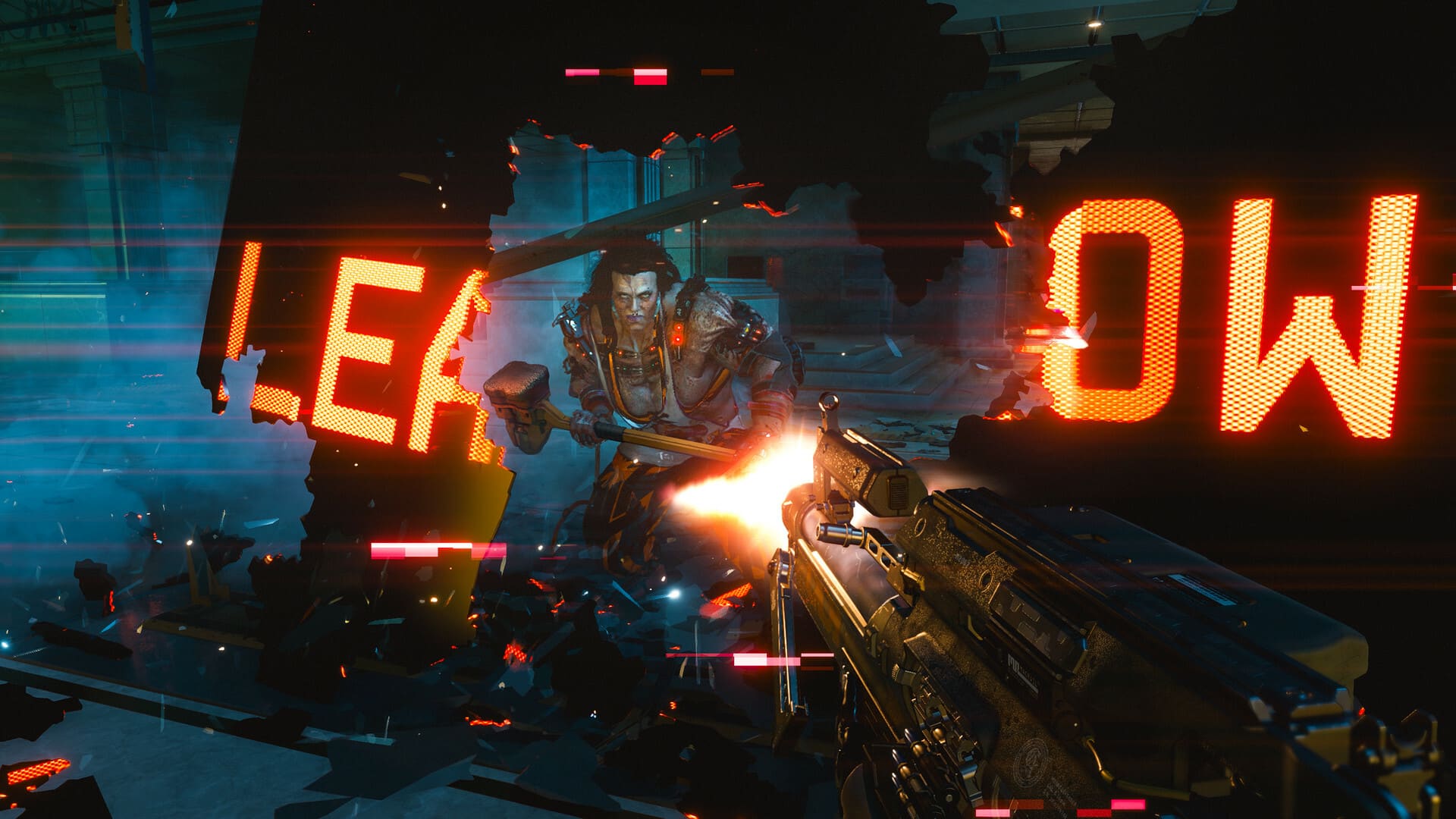
Experiencing that was enlightening in an exhausting, horrifying kind of way, and my time with Cyberpunk 2077 so far reflects that.
V’s apartment building is a rabbit’s warren of low ceilings and dejected souls sitting in corridors like so much detritus. There are piles of litter and graffiti — an environmental artist’s shorthand for squalor. The streets and markets surrounding are little better, dense and impenetrable to the casual visitor. In these streets and buildings, humanity suffers. You don’t see it so much as feel it, a sense that the holograms and bright lights are a wallpaper over a plague of homelessness and misery.
Even though Night City is built upon an ‘80s-inspired retro future, it reminds me of my year-and-a-half-long unfiltered glimpse into the situations of the less fortunate. The space reminds of London far more effectively than Watch Dogs: Legion or Vampyr ever did.
That’s only one side of Night City though. Elsewhere is opulence aplenty. Bougie hotels, sleek offices, open spaces, and an almost antiseptic cleanliness. The contrast against V’s slum-like stomping grounds is pointed, obvious, and effective. The visual design draws a line in the sand between the haves and have-nots — a line underscored by the events of V’s first visit to Konpeki Plaza.
The 1% can get away with anything, and the chaos swallows anyone else unfortunate enough to be caught up in the drama. The powerful are willing to exercise their power however they please, while the rest of us can only try to believe in trickle-down benefits and upward mobility.
For V, everything unravels. Her plans are blasted, her relationships ruined. That’s when Cyberpunk 2077 gets interesting. The game sets aside the breakneck pursuit of money and status driven by Jackie’s misguided ambition and starts to examine other motivations: honor, friendship, revenge, survival. Permeating all of that is a bubbling rage directed at the system.
It’s classic cyberpunk.
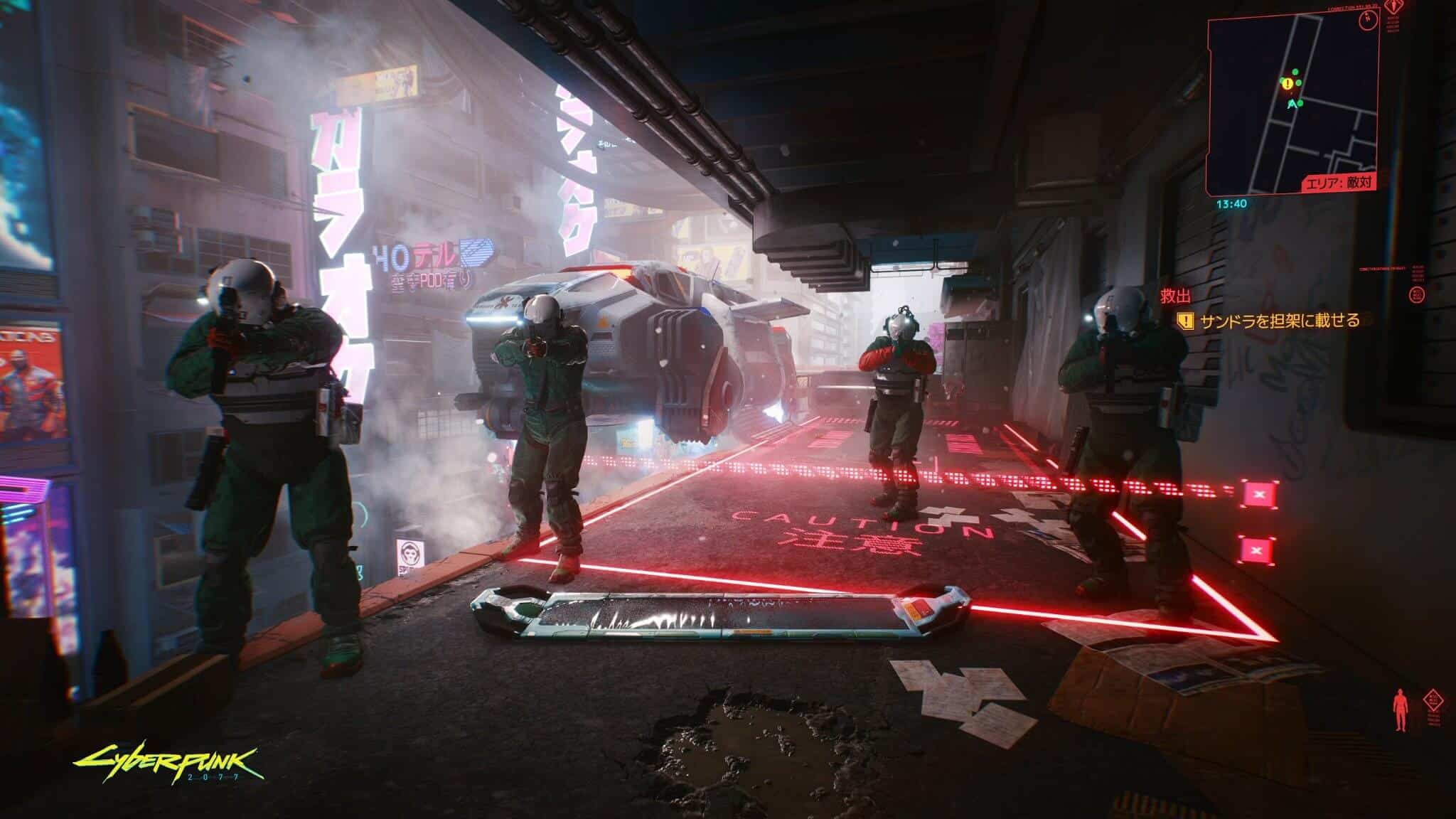
Associate professor David Beard writes in Clockwork Rhetoric that “(i)n both cyberpunk and steampunk, there is a countercultural, counterinstitutional, countercorporate impulse.” In turn, that impulse draws upon the norms (or lack thereof) of subcultures, including punk. Subcultures arise from the fringes of society as a means of collective non-conformity. Punk is just one manifestation. Others include hip-hop, emo, eshay, and goth. All are, to varying degrees, anarchic identities, which sociologist Dick Hebdige describes as “a kind of temporary blockage in the system of representation.” They appear as a breakdown of social mores, attracting negativity from the conservative commentariat.
At first, these “deviant” identities are demonized, but society always eventually finds a way to commodify subculture aesthetics and incorporate their ideologies. Rap reaches the mainstream; punk reaches the catwalks; nihilistic worldviews become oh-so-vogue. This holds true in Night City. Cyberpunk 2077’s society has long since commodified tech-infused body modification. Parts and upgrades are advertised, bought, and sold like clothes. Meanwhile, the incorporation element is symbolized not only through the prevalence of cyber-aesthetics but also through the figure of Yorinobu Arasaka — the heir to one of the world’s most powerful megacorporations, once a rebel and now returned to the fold. The deviant co-opted into the status quo.
For all that Night City looks like a cyberpunk dream, it represents a postmodern dystopia. This space is built upon an alternative history of corporate warfare and destruction of the world shared between fact and fiction, yet the system grinds on. The game retains a punk identity by highlighting and vilifying the role of business and institutions in commodifying and destroying individual citizens. Johnny Silverhand talks at points about how culture needs to move on from its obsession with the past. Even though megacorporations rule the world in a grand display of capitalist success, real-world issues such as poverty, unemployment, addiction, and mental illness remain —and are perhaps even more common.
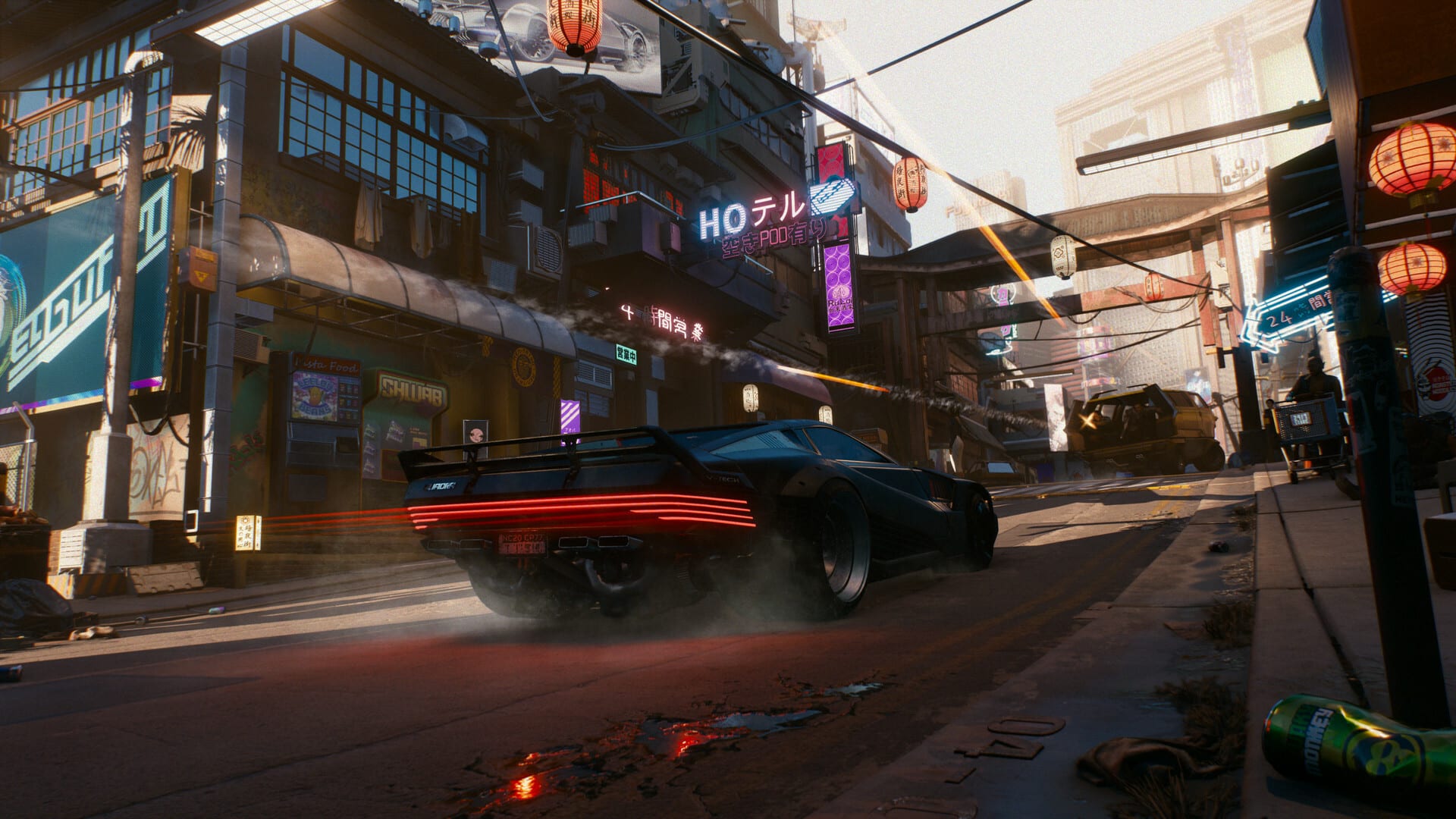
The “countercultural, counterinstitutional, countercorporate impulse” is alive and well. Anyone with eyes can draw parallels between the real now and this fictional 2077, even though the game has its origins in a world that is not ours. In fact, Cyberpunk 2077 welcomes those comparisons.
The game is rarely content to let subtext speak. V and her circle engage in all sorts of philosophical conversations about human nature and motivation and the structures of society. The game feels almost proud of these moments — and to some extent it should. The dialogue often feels more rewarding than fighting or sneaking through yet another crushingly dark locale at the word of some random NPC.
At the same time, that highlights one of the things about Cyberpunk 2077 I’ve found increasingly tiresome. The game wants you to think it’s deep and meaningful. That’s why it includes these conversations. That’s why it has such lavish attention to detail across every part of Night City. That’s why there is such a remarkable breadth to the world-building.
For all that, it feels hollow. It feels… like a game.
Although, I’m not saying a game being a game is a bad thing. And I never expected Cyberpunk 2077 to be a shining example of ludonarrative coherence. Nevertheless, the game lays bare all these structural issues, yet it fails to use its mechanics to say anything more. Others have written enough about the dated feeling of the open-world systems and the atrocious state of release to make any commentary on that seem like so much reactionary garbage.
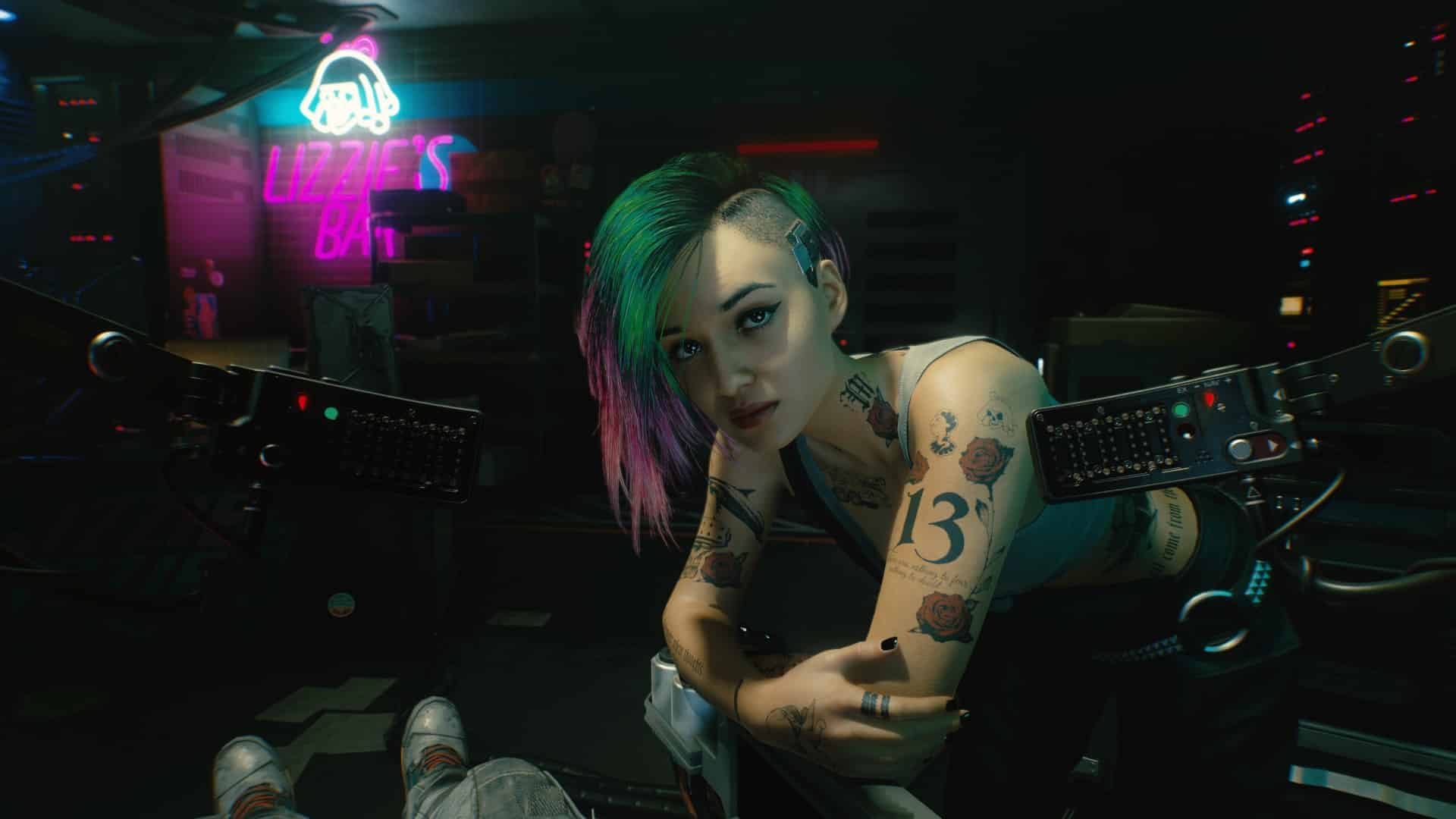
Suffice to say the contrast between the story and the systems is almost as vast as that between V’s hovel and Konpeki Plaza: anarchic depth on one hand and recycled conventions on the other.
Playing Cyberpunk 2077, I am torn between two worlds, two design ideologies. The game feels like it’s splitting apart at the seams, unable to sustain the scope that CD Projekt Red has striven for — not just technologically but thematically as well. Being a player and walking that tightrope, trying to resolve that dichotomy to find something more than the transient enjoyment of chaos, is exhausting.
I’ve not finished the game yet, so things could change. And I will persevere, playing regularly and briefly until I again grow tired of existing in this space. Maybe my feelings will change. Maybe not.
On some level, Cyberpunk 2077 speaks to me. It reminds me of just how ugly and exhausting reality can be. That’s what will keep me coming back.


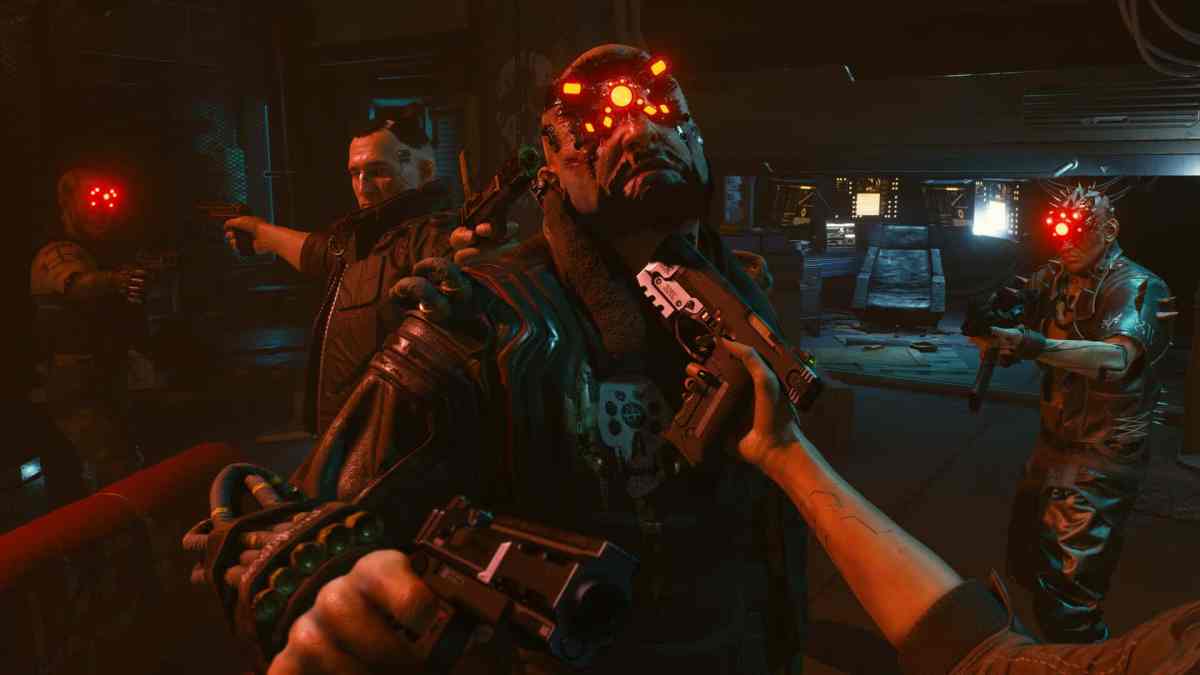




Published: Dec 27, 2020 11:00 am